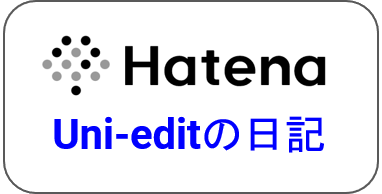難易度:初級
Uni-editのお客様の1人から、あるジャーナルに論文原稿を投稿する際に、その原稿の査読者を指名するように求められたことについて、質問を受けました。
投稿先のジャーナルから、私の論文のチェックを依頼する査読候補者のリストを提供するように求められました。しかし、それには違和感を抱きます。査読が公正であるためには、ジャーナル側が査読者を選択するべきではないでしょうか。そうでなければ、研究の科学的価値に関係なく、肯定的な査読を確実に受けるために、著者は自分を支持してくれる査読者だけを選ぶと思います。
このお客様は、一部のジャーナルが著者に対して要求する、投稿論文のカバーレターに記載する査読候補者のリストついて言及しています。ジャーナルによってはそのようなリストを提出するように明記していないけれども、著者がリストを提供すればそれを考慮するということもあります。
そのお客様の懸念は、一見したところ妥当なようです。出版の決定は、著者が知っている人より、論文の科学的価値のみに基づくべきではないでしょうか。しかしながら、この査読候補者リストを要求することの基本原理はえこひいきとは無縁であり、その実際の結果は投稿論文の質を改善し、公平な出版の決定をするのに役立ちます。
なぜ査読者を指名するのですか。
査読候補者リストを提出させる目的は、著者らを優先的に扱うことではなく、むしろ公正な扱いを確実に受けられるようにするためです。主な理由は、広範囲の様々なサブフィールドの論文に査読者を割り当てなければならないジャーナルの編集委員と比較して、おそらく論文の著者のほうが、その特定のサブフィールドにおいてどの専門家がその研究を評価するのに最も適任であるかをよく知っているからです。
このようなわけで、査読候補者リストの要求は、特に分野を限定しない広範囲のジャーナルでよくあることです。ジャーナルの扱う領域が狭いほど、その編集委員会が、そのサブフィールドの主要な専門家とおそらくすでに接触している可能性が高く、これらの専門家が、編集委員を務めていることさえあるかもしれません。
留意していただきたいのは、査読候補者リストは、単に推奨リストにすぎないということです。候補者が査読を辞退することがありますし、編集委員会が候補者に依頼しないこともあります。このように、ジャーナルは、えこひいきや陰性バイアスが明らかに疑われるような事例を回避することができます。その上、査読はオープンではなく、あなたはおそらく査読者の氏名や身元を決して知ることはないでしょう。
ステップ1 7~10人の望ましい査読者を選択します。
あなたの特定のサブフィールドにおいて、出版論文の著者または著名な専門家を7~10人選択します。それらの人の研究主題があなたの研究主題に近いほど、より慎重に考えて名前をリストするべきです。それらの人は、知り合いの著者であったり、これまで会ったこともない著者であったり、会議の講演者であったり、業界の専門家であったりするかもしれません。査読者として推奨する前に必ずしもその人に連絡する必要はありませんが、連絡しておけば、公式な依頼を受けたときに同意を得やすいかもしれません。
自分の論文は2、3人の査読を受けるのにすぎないのに、なぜ、7~10人の査読者を指名すべきかと質問されるかもしれません。繰り返しますが、著者が提供する査読候補者のリストは、単に推奨にすぎませんので、あなたが指名する全員に査読が依頼されるわけではなく、また依頼された全員が同意するというわけでもありません。
知り合いの研究者や、前に共同研究した研究者を選択するのも問題ありません。とはいえ、利益相反する人を査読者として選択してはいけません。これには明らかに、著者の属する施設、または共著者の属する施設の研究者を含みます。それほど明確ではない例は、あなたが研究中の技術、工程、化学物質などに関する特許を有する人です。
ステップ2 論文で引用した著者らか、またはジャーナル側がすでに知っている著者を選択します。
あなたが論文で引用した著者らは、あなたの論文が研究の主題を正しく述べているか、さらには引用した著者らの研究の範囲と結論を正しく述べているかどうかに必ず関心があります。さらに、査読することによりあなたの研究の知見を、それをおそらく読み、引用しそうな人々に広めて、あなたとの新しい共同研究を切り開きます。自分のサブフィールドの研究者らを個人的にあまり多く知らない場合、このときこそそれらの人とつながりを持つチャンスです。
この場合、一般的な背景情報の記載にあなたが引用する著者よりも、自分の研究と直接関連する研究の著者を選択するのがベストです。あなたが頻繁に引用した著者か、またはその知見があなた自身の研究に助けになるような著者を選択することです。
あなたがその領域の新参者である場合、またはあなたが引用する著者らがあなたの論文を適正に査読しないと思われる場合(例えば、ことによるとあなたが彼らの知見に批判的である場合)、もう一つの良い選択肢は、投稿先のジャーナルの過去2、3年分を読み通し、類似のサブフィールドで最近出版した著者らまたは共著者らを選択することです。編集委員会はそれらの著者らとすでになじみがありますし、またそれらの著者らは論文を出版したそのジャーナルの査読者として喜んで貢献する可能性があります。
ステップ3 あなたの論文を精確かつ建設的に査読できる人を選択します。
論文を投稿する目的についてより広く考えてみましょう。単に履歴書や個人的なウェブサイトの出版物のリストにタイトルを加えるために論文を出版したいのですか。あるいは、幅広い読者にその研究結果が尊重され、引用されるような、強い影響力を持つ研究論文を出版したいですか。
実際のところ、どの研究者も、研究室も、研究主題を一義的に理解することはありません。査読者の意見を取り入れることによって、研究主題の背景にある真実を反映し、「時の試練に耐える」ことができるのです。すなわち、その領域で今後10年も妥当性を保つことができるのです。その点で、もし研究主題が幅広く国際的な関心を得られる場合、査読者を様々な国から選択すると、世界的にアピールできるような論文の修正に役立ちます。
しかし、あなたは以前に、あるジャーナルで特定の編集委員または対象分野の専門家である査読者の偏見に接した経験があるかもしれません。編集委員は、ジャーナルへの適合性や領域について最も懸念する可能性がありますが、対象分野の専門家である査読者は資金提供を争っている場合や、個人的計画があるかもしれません。その偏見が不当であると感じる場合、別のリストで好ましくない査読者を示すことができます。その場合、必ず理由を説明するようにします。(下記のルール5を参照)
ステップ4 下位研究者らを何人か選択します。
該当分野で最も有名な研究者や高評価の研究者は、通常は非常に多忙です。上位研究者らは、自分の処理しうる時間以上の査読の依頼を受けており、その他のプロジェクトを優先させるために、無意識に査読を急ぐ可能性があります。その上、有名な研究者ばかりを推奨しますと、その領域にあまり精通していないことを反映し、あなたが一般的知識しか持っていないことを示唆してしまいます。
一方、下位研究者らは処理しうる時間以上の査読の依頼を受けるということはおそらくないので、査読を受け入れてくれる可能性は高いです。それに加えて、下位研究者らは比較的に時間があり、その領域についてより多くを学びたいと思い、さらには目標のジャーナルで強力な査読スキルを持つという良い評判を得たいので、あなたの研究を精確に検討するためにおそらく特別に時間をかけるでしょう。
ステップ5 各査読候補者について、選択理由と連絡先を記載します。
編集委員会に選択理由を知らせます。編集委員は各候補者を調査し、選択理由と各人の状況や経歴を比較して査読者を決定します。選択理由は長い必要はありません。通常は1、2文で十分です。選択理由の例は次のとおりです。
- 分野の妥当性
「彼の研究室におけるゼブラフィッシュのCRISPRゲノム編集に関する研究を多数引用しているので推奨します。」
- 技術的専門知識
「彼女は著者らが本論文で使用した特異的な微生物培養技術を開発したので推奨します。」
- 研究の認知度
「同じ主題の過去の研究で密接に共同研究をしたので推奨します。」
好ましくない査読者(すなわち、否定的に偏向すると予想される査読者)をリストにする場合も、その理由を必要とします。例えば、次のとおりです。「著者らが先に提出した論文(提出No.1234、2014年3月5日)の査読者No.2は、その査読において非建設的なコメントをし、著者らの方法論に精通していないと思われるので、編集委員会にその人物を査読者として選任しないようにお願いいたします。」
連絡先に関しては、各査読者のeメールアドレスと所属施設が記載されていれば通常は十分であり、この情報は、それらの施設のウェブサイトから得られます。
出版後と報告書
最後に一言加えますと、論文を出版後、一部のジャーナルは原著論文とともに査読報告書も出版します。編集委員会では、査読報告書を出版することが査読者の努力に報い、さらには査読過程のより一層の透明性に寄与しうると考えています。これは、あなた(著者)にとって良いことです。建設的かつ包括的な報告を書く好ましい査読者は、論文の読者をとらえ、その読者らが文献におけるあなたの研究の位置を理解するのを助け、読者ら(そして、あなた)にさらなる研究の新たな方向を示してくれるのです。
Download Tip Here:  Why should I nominate peer reviewers?
Why should I nominate peer reviewers?
Uni-edit English Writing Tip 012: Why should I nominate peer reviewers?
Difficulty: Easy
One of our customers asked us about a specific request from their target journal to nominate peer reviewers for their manuscript when submitting it to a journal.
My target journal asked me to nominate a list of peer reviewers they could ask to review my paper. This seems unusual to me. Shouldn’t the journal choose my peer reviewers, so the review is objective? It seems to me I could choose only friendly reviewers to ensure a positive review, regardless of the scientific merit of my study.
Our customer is referring to the practice of some journals of requesting submitting authors to provide a list of recommended peer reviewers in their cover letter. Some journals do not explicitly ask for such a list, but will consider one if the author provides one.
Our customer’s concerns seem valid at first glance. Shouldn’t the publication decision be based on a paper’s scientific merit alone, rather than on who the author knows? However, the rationale for this practice is not favoritism at all, and its practical consequences help to improve the quality of your paper and ensure a fair publication decision.
Why nominate peer reviewers?
The goal of this practice is not to give authors preferential treatment, but rather to ensure they are given fair treatment. The main reason is that compared with a journal’s Editors, who must assign peer reviewers to a wide range of papers across various subfields, the author of a paper probably knows better which experts are most qualified to evaluate research in their specific subfield.
This is why this practice is especially common in generalist journals: the narrower a journal’s scope, the more likely its Editorial Board is to already be in contact with the leading experts in the subfield (these experts might even serve on the Editorial Board!)
Remember, your list is just a recommendation: reviewers can decline to review, and the Editorial Board can decline to ask them. In this way, the journal can avoid obvious cases where they would suspect favoritism or negative bias. In addition, peer review is blinded: you will likely never know the name/identity of any of your peer reviewers.
Step 1. Choose 7-10 preferred reviewers.
Choose 7-10 published authors or notable experts in your specific subfield. The closer their research topics are to yours, the more strongly you should consider listing their names. These can be authors you know, or authors you’ve never met; speakers at conferences, or industry experts. It is not essential to contact a person before recommending them as a reviewer, but doing so may make them more likely to agree if and when they get the official request.
You might ask, why should I nominate 7-10 reviewers, if my paper is only going to be reviewed by 2 or 3? Again, your list is just a recommendation: not everyone you suggest will be asked, and not everyone asked will agree to the request.
It’s fine to choose researchers you know and have collaborated with before. Do not, however, choose reviewers with a conflict of interest. This obviously includes researchers from your institution or from your co-authors’ institutions. A less obvious example is someone with a patent on a technology, process, chemical compound, etc., that you are testing.
Step 2. Choose authors you cite, or authors the journal knows of already.
Authors you cite have a clear interest in ensuring your paper correctly describes your research topic, and that it correctly states the scope and conclusions of their research where you cite it. Moreover, it spreads knowledge of your work to the people most likely to read it and cite it, opening up new research collaborations with you. If you don’t personally know many researchers in your subfield, now is the chance to make those connections!
For this strategy, it is best to choose authors whose work is directly relevant to your own, rather than just those authors you cite when providing general background information. Focus on those you refer to a lot, or whose findings are instrumental to your own work.
If you’re new to the field, or feel that authors you cite would not fairly review your paper (for example, maybe you’re critical of their findings), another good option is to read through the last few years of your target journal, and select recently published authors or co-authors in similar subfields. The Editorial Board will already be familiar with the authors, and the authors may be happy to serve as a peer reviewer for the same journal that published them.
Step 3. Choose reviewers who can review your paper critically and constructively.
Think more broadly about your goal for your paper. Do you merely want to publish the paper, to add a title to your list of publications on your resume or personal website? Or do you want your paper to reflect strong research, whose results will be respected and cited by a broad range of readers?
The truth is, no single researcher or laboratory has the only understanding of a research topic: by incorporating the opinions of your peers, your research is more likely to reflect the truth behind a research topic, and to ‘stand the test of time’: i.e., to have relevance in the field even ten years from now. In that regard, if your research topic has broad, international interest, choosing reviewers from a variety of countries will help you to revise your paper to have global appeal.
However, you might have experience with bias from particular associate editors or subject-matter-expert reviewers in a journal before. Associate editors may be most concerned about journal fit and scope, while subject-matter-expert reviewers may be competing for funding, or have personal agendas. If you feel the bias is unfair, you can also designate non-preferred reviewers in another list. In this case, be sure to explain why! (See Rule 5 below.)
Step 4. Choose some junior researchers.
The most famous and well-regarded researchers in your field are usually very busy. Senior researchers receive more peer-review requests than they have time to handle, and may unconsciously rush through a peer review in order to give priority to other projects. In addition, recommending only well-known researchers can reflect poorly on your familiarity with the field, suggesting you have only a generalist knowledge of it.
Junior researchers, on the other hand, are less likely to receive more requests than they can handle, making them more likely to accept yours. In addition, they will probably devote extra time to critically examining your research, because they have more time, because they want to learn more about the field, and because they want to build a good reputation with the target journal for having strong peer-review skills.
Step 5. Provide a justification and contact information for each reviewer.
Providing a justification gives the Editorial Board context for your choices: as they research each candidate, they will compare your reason with the facts and background of each person to make their decision. Justifications need not be long: one or two sentences usually suffices. Types of justifications include:
- Field relevance: “Recommended because we heavily cite his research lab’s work on CRISPR gene editing in the zebrafish.”
- Technical expertise: “Recommended because she developed the specific microbial cultivation technique we used in this paper.”
- Familiarity with research: “Recommended because we have collaborated closely in past research on the same topic.”
If you decide to list any non-preferred reviewers (i.e., reviewers your expect to be negatively biased), this requires a justification too. E.g., “We request the Editorial Board not to assign Reviewer #2 from our previously submitted paper (Submission No. 1234, 5 Mar 2014), due to unconstructive commentary and seeming unfamiliarity with our methodology in that review.”
As for contact information, an email address and institution for each reviewer is usually sufficient; this information can be obtained from their institution’s website.
Post Publication and Posterity
One final note: following publication, some journals also publish peer review reports with the original paper. They believe it gives credit to the reviewers for the hard work they have done and also it can contribute to the greater transparency of the peer review process. This is good news for you, the author: preferred reviewers who will write constructive and comprehensive reports will engage your readership, helping them to understand your study’s place in the literature and giving them (and you!) new directions for further research.



